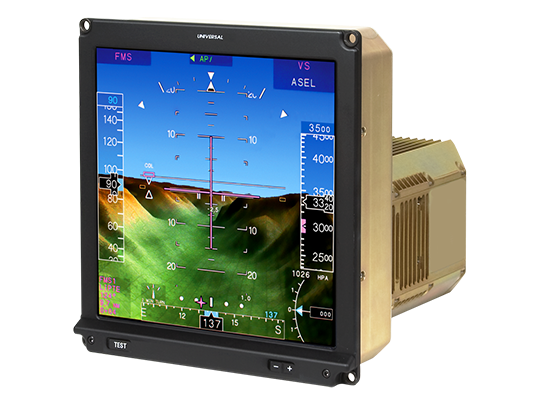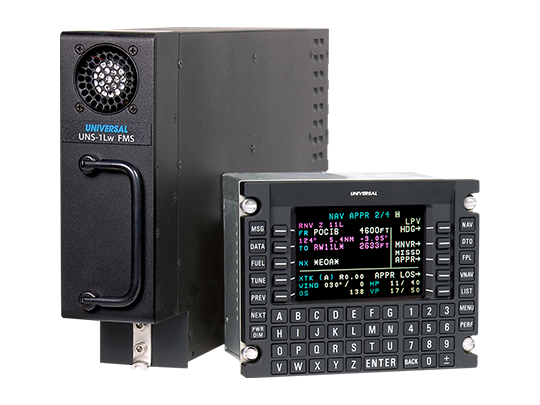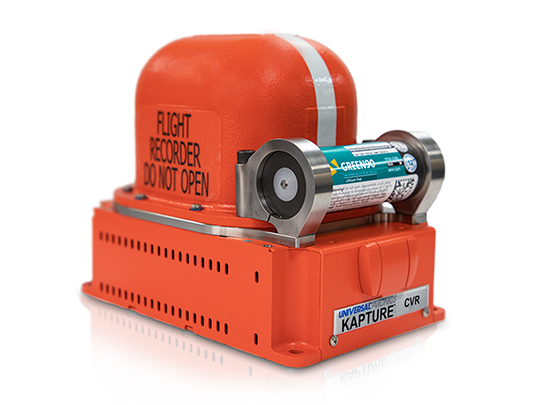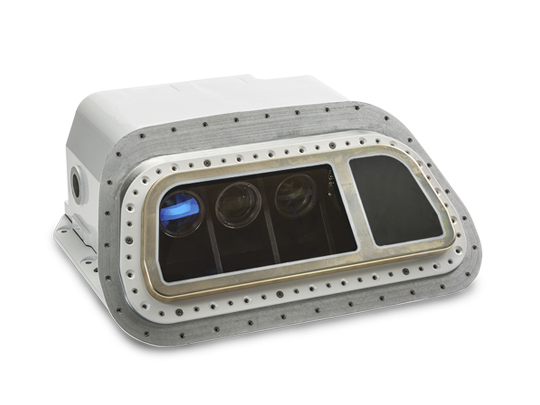Featuring a software-based, flexible open-architecture system, the Interactive Flight Management System (i-FMS) can run on a variety of hardware options from OEM supplied platforms, to commercial or paramilitary versions.
The i-FMS features a portable FMS with highly modular architecture for ready deployment to any ARINC 653 compliant platform and a separate Human-Machine Interface (HMI). Customers may run the application in many third-party options to best suit their flight deck, with no need for specific hardware or Line Replaceable Units (LRU).
The HMI, implemented with an ARINC 661 User Application, connects to the core operating system and allows the pilot to communicate with the application. With UA’s state-of-the-art touch-based HMI, customers can customize their own flight deck with the hosted FMS software. Since the system is modular, customers may specify future functionalities, allowing for easy adaptation to address upcoming requirements. Support for a third-party HMI is also offered. Additionally, customers may integrate their proprietary functions by interfacing to the core operating system or by customizing menus and operational logic.
Designed to support the potential for augmented reality capabilities, the i-FMS is the future of flying. The i-FMS tackles one of the main challenges pilots face today with FMS operations; the need to propose changes to the FMS during critical phases of flight such as takeoff and landing.
Typically, during this time the pilot is required to shift their attention from outside the cockpit window to the FMS display unit – to reprogram the FMS and validate changes are correct – requiring last-minute updates and head-down operations. The i-FMS better supports this, allowing the pilot to project waypoints and information from the FMS onto the real-world, superimposed on a Head-Up Display (HUD), UA’s SkyLens™ Head-Wearable Display (HWD) or SkyVis™ Helmet-Mounted Display (HMD). The pilot is able to interact with these features by Line-of-Sight (head/eye tracking) and a select/deselect button on the aircraft throttle, minimizing head-down operations.
With the i-FMS's more streamlined working environment; performance, safety, and efficiency are all enhanced, improving the overall pilot experience. In addition, the i-FMS provides a platform for NextGen and SESAR capabilities and mandates such as FANS 1/A+, CPDLC, and ATN B1/B2. Support of low RNP (<0.3), A-RNP, and RNP-AR operations are also afforded.
Yes, we retrofit legacy systems (e.g., GE Frame 5, Siemens V94.2) with modern digital controllers, typically completing hardware integration within 4-8 weeks. Software migration requires additional validation time.
We recommend annual performance testing under ISO 3977-2 standards. Critical applications (e.g., offshore platforms) may require semi-annual tests with emissions compliance checks.
All rad-hard devices (e.g., FPGA, ADC) are QML Class V certified under MIL-PRF-38535 and tested to MIL-STD-883 Method 1019 for SEU tolerance. Full qualification reports are available upon request.
Our ASICs and power management ICs operate across -55°C to +175°C ambient temperatures, with derating curves provided in military temperature range (MTR) datasheets.
Our PMA parts (e.g., actuators, sensors) hold FAA/EASA Form 1 certification and match OEM form/fit/function. Installation requires SB/MB documentation per FAA AC 23.1529.
All NAS/MS fasteners include full DNA traceability: melt source (AMS 2301), heat/lot numbers, and AS9100-compliant MTRs with ultrasonic test reports.
AOG orders ship within 4 hours for stocked items (FAA-PMA, EASA Part 21G). Non-stock critical parts trigger priority manufacturing with 72-hour max turnaround.






 Gas Turbine
Gas Turbine
 Aircraft parts
Aircraft parts